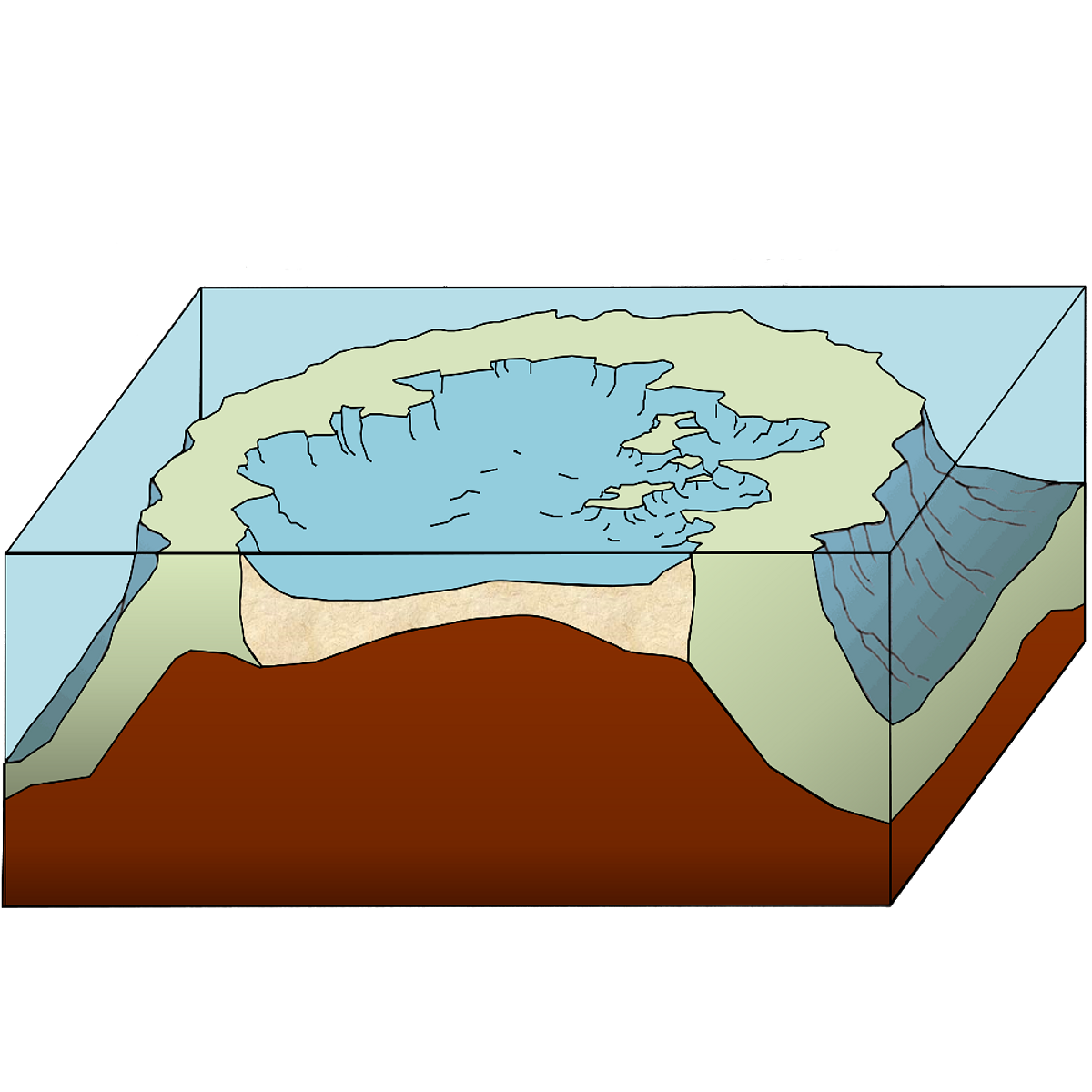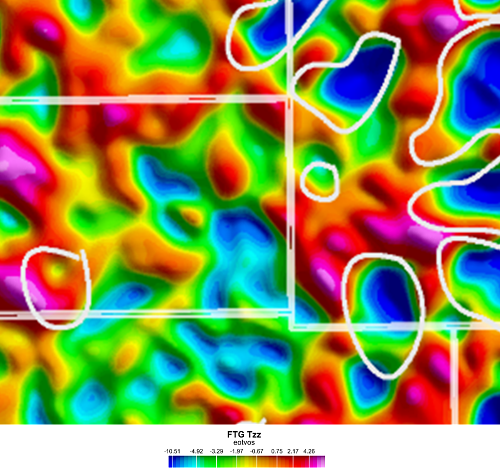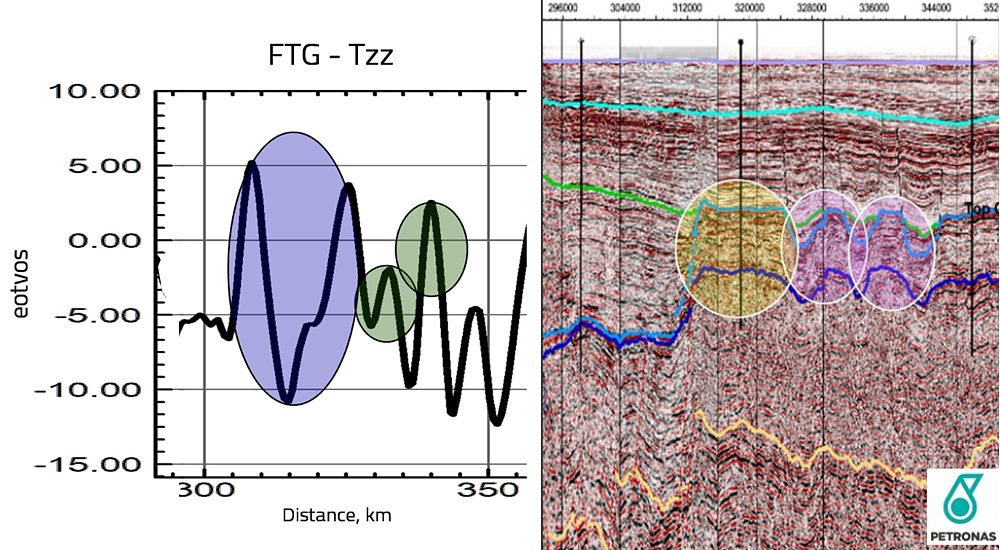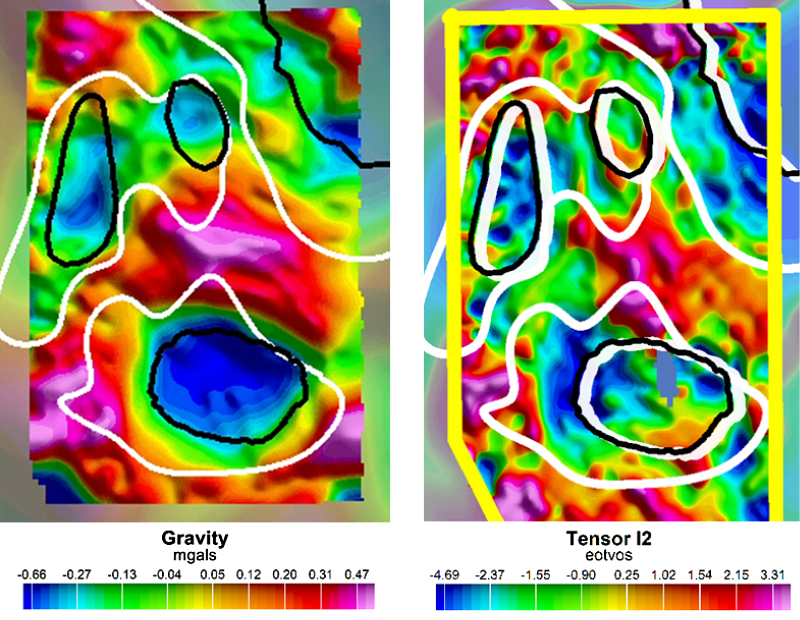FTG shows sensitivity to carbonate composition
FTG data acquired over the Luconia Province of offshore Malaysia show remarkable sensitivity to the Top Cycle IV carbonate build-up structures.

Carbonates, buried at 800 to 1200m below sea-level, show increased porosity over known oil and gas fields. Their high porosity yields a low density, making them ideally suited for detection with FTG.

FTG is a multi tensor-component technology that simultaneously measures the rate of change of gravity in all directions of the field as presented by sub-surface geological density contrasts. This makes FTG an ideal technology of choice for assessing carbonate build-ups and their likely composition. Varying degrees of porosity correspond to varying degrees of density and so directly influence the FTG response.

Conventional gravity shown in Figure 3 identifies low-density areas associated with known gas fields (black outline) from known carbonate bodies (white outline). However, it is FTG’s full tensor measurement offering high accuracy and ultra high resolution that permits assessment of compositional complexity.
Invariant tensor analysis of the FTG data (Figure 3) clearly identifies and locates potential for additional low density (increased porosity) material both within and proximal to the known gas fields.


